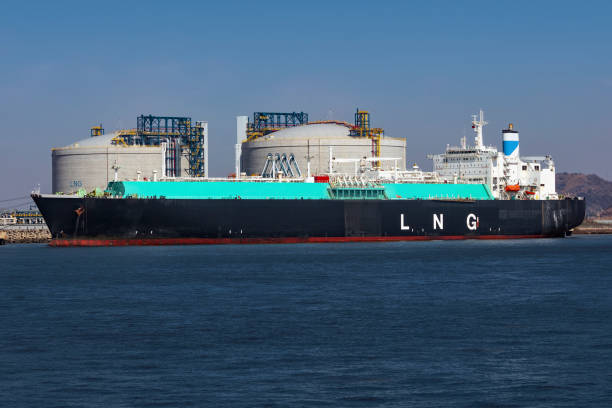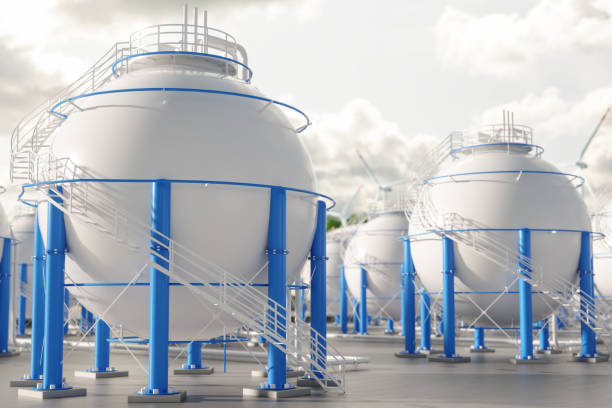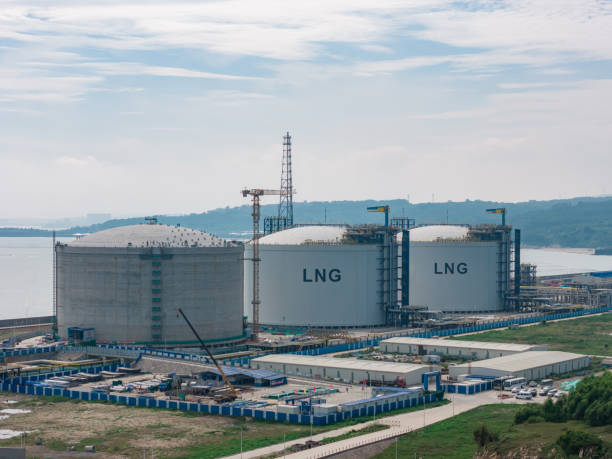
At Hudson Oil Corporation, Liquefied Natural Gas (LNG) represents a pivotal shift toward clean, efficient, and transportable energy solutions. As global energy demands rise and environmental regulations tighten, LNG offers a low-emission alternative to conventional fossil fuels—backed by advanced production, handling, and transportation technologies.
Liquefied Natural Gas (LNG) is natural gas—primarily composed of methane (CH₄) and ethane (C₂H₆)—that has been cooled to approximately −162°C (−260°F) to transform it into a liquid state. This process reduces its volume by about 600 times, making it economically viable for storage and transportation across long distances where pipelines are not feasible.
Key Characteristics of LNG:
Odorless
Colorless
Non-toxic
Non-corrosive
While safe in its liquid form, LNG poses hazards if mishandled post-vaporization, such as:
Flammability upon return to gaseous state
Freezing on skin contact due to extreme cold
Asphyxiation in enclosed or unventilated spaces
The production of LNG involves a meticulous multi-stage process:
Gas Treatment
Impurities are removed, including:
Acid gases (H₂S, CO₂)
Water vapor
Mercury
Dust and oil residues
Heavy hydrocarbons
This ensures equipment protection, corrosion resistance, and safe downstream operations.
Gas Separation
Heavier hydrocarbons (Propane, Butane) are extracted and often sold separately as Liquefied Petroleum Gas (LPG).
Lighter hydrocarbons (Methane and Ethane) are directed to the liquefaction stage.
Liquefaction
The cleaned gas is cooled at near-atmospheric pressure (~25 kPa or 4 psi) to transform into liquid LNG, which is then stored in cryogenic tanks.

Because of its reduced volume, LNG is ideally suited for marine transport over long distances, especially when pipelines are technically or economically impractical. Hudson Oil Corporation utilizes state-of-the-art cryogenic LNG carriers and road tankers for efficient transport.
Volumetric Energy Comparison:
LNG has 2.4× more energy density than Compressed Natural Gas (CNG at 250 bar)
LNG contains roughly 60% of the energy density of diesel

Upon arrival at import terminals, LNG undergoes regasification—a process of applying heat to convert LNG back into its gaseous form for pipeline distribution.
Primary Applications:
Power generation
Industrial energy supply
Residential gas networks
Marine and heavy-duty vehicle fuel (LNG-fueled ships and trucks)
Though CNG is more prevalent in natural gas vehicles, LNG is gaining traction in long-haul transport and marine industries due to its higher energy density and lower emissions profile.
Historically, natural gas was often flared or underutilized in remote oil fields due to the lack of infrastructure for transport. Today, LNG enables global trade of natural gas, transforming formerly stranded gas reserves into valuable, export-ready energy resources.
Global Trends:
LNG is projected to represent over 10% of the energy output equivalent to global crude oil production
LNG trade is expanding into emerging markets and non-traditional regions, unlocking new demand
Challenges & Considerations:
High capital costs for liquefaction plants and cryogenic storage
Variable heating value of LNG depending on gas source and liquefaction process (typically ~50 MJ/kg or 21,500 BTU/lb)
Strict safety and handling protocols due to cryogenic nature and flammability
As the world moves toward lower-carbon solutions, LNG stands out as a transition fuel—offering lower CO₂ emissions, reduced particulates, and greater energy efficiency than coal and oil. Hudson Oil Corporation continues to invest in LNG value chain innovations, from modular liquefaction units to floating storage and regasification terminals, to meet the growing global demand sustainably and reliably.
Advanced infrastructure for LNG processing and export
Secure logistics network with marine and overland cryogenic transport
Commitment to environmental safety and compliance
Strategic access to global LNG markets across Europe, Asia, and the Americas